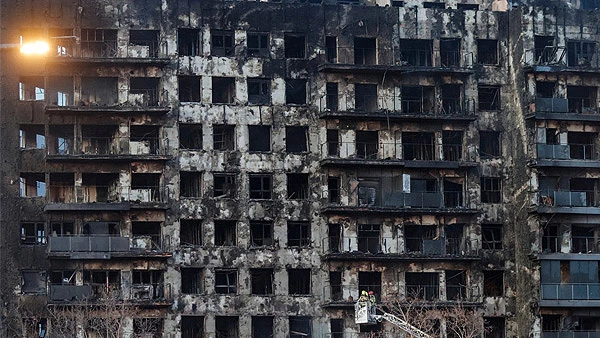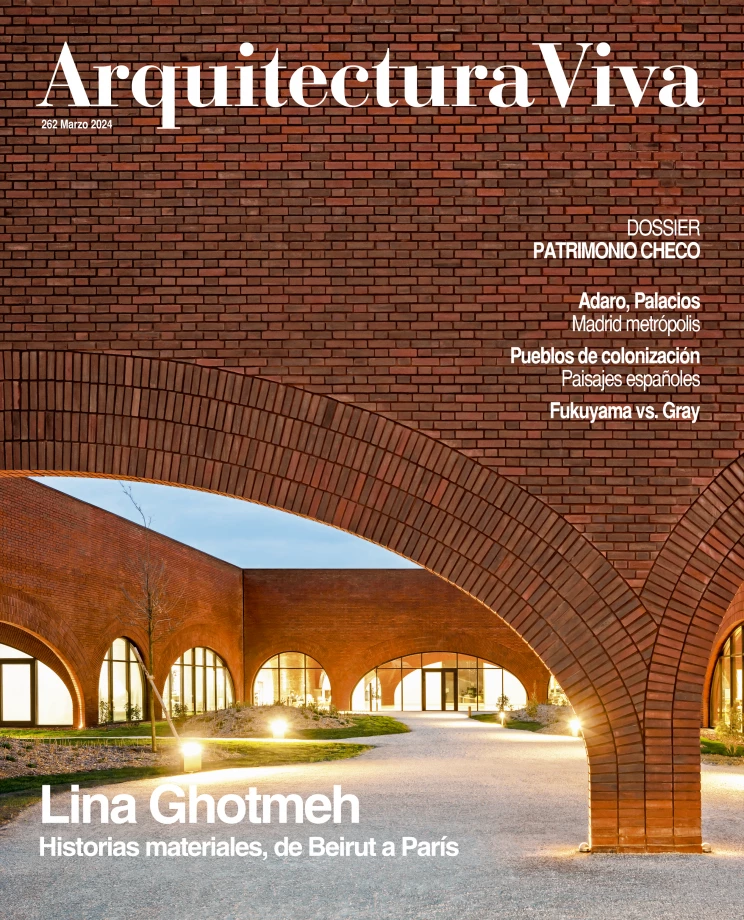
Ten people have perished in a conflagration which in a matter of minutes wrapped the facades of the fourteen-story building in the eastern Spanish city of Valencia. A combination of combustible facade materials, air chambers between the building’s skin and insulation, and strong gusts of wind made the flames spread very swiftly. Nobody can bring back the life of the victims, and we can only hope that the insurance companies and government administrations will be magnanimous in compensating for the material damages wrought on over a hundred households, and spare them the bane of red tape.
But those who lived in that apartment block are not the only ones affected by the disaster. This very moment, thousands of families elsewhere are wondering if their dwellings are safe. In the insulation industry, companies suddenly see their investments endangered, and workers their jobs. Meanwhile, a whole new set of regulations is sure to rain upon us architects, with no thought for the fact that the building in question was raised before the current ones even came into force.
The very act of being alive comes with risks, and preventing danger is key to the safety and survival of all living beings. In the case of oysters, for example, it consists of staying put within the shield of a hard shell, and for whales and elephants it has to do size, with being so large that no one dares to attack them. Each strategy comes with its price: immobility in the former, difficulty of finding sufficient food in the latter.
We are constantly assessing and assuming risks, although we generally are only aware of those associated with mobility. We know that every year, more than a thousand people die in traffic accidents (in Spain alone), but we have no qualms about getting into a car and even a motorcycle, which has a much higher accident rate. Yet we are slow to accept that our houses, our shelters, are a risk factor too. We are more open to the idea of domestic accidents, a consequence of clumsiness or wrong use of electricity, gas… All accidents are preventable, it’s a matter of heeding the do’s and don’ts.
Reinforced concrete and protected steel have to imperceptible limits reduced the risk that a blaze will altogether bring down a building’s structure before it can be evacuated (in Valencia, the actual building remains standing). The biggest fire-related risk right now is asphyxiation by the toxic smoke produced during the burning of claddings, furniture, and other objects.
For quite a number of years, the construction sector has been using materials with excellent properties in terms of insulation, which in any case should always be considered in the risk-benefit equation. For new works, exterior insulation presents, among other things, advantages with regard to the suppression of thermal bridges and the increase of the thermal inertia of the building, which is thus protected against extreme outdoor temperatures. In refurbishments, insulating from outside has practically become obligatory. Who wants to lose ten to twenty centimeters of usable space in all rooms along the facade? Especially when insulation has been allowed on the outside ever since our town halls generously decided that its montage did not count as built volume.
I will not opine here on the pros and cons of the different kinds of insulation: all those for sale on the market have their respective advantages and risks, which I believe perfectly in line with current standards. What is clear is that the combination of a highly combustible skin and a ventilated chamber poses an unacceptable risk, one which already resulted in tragedy in London seven years ago, and which calls for immediate identification of buildings with facades built in that manner, and a specific analysis of the risks they run.






